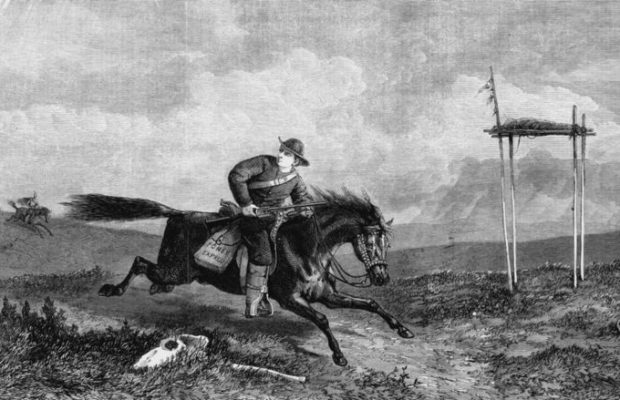Podcasts

Photo: NewsRadio WINA
In this segment historian, Rick Britton talks, with Les Sinclair about THIS WEEK IN US HISTORY: This week in 1860—on April 3—the first Pony Express rider departed from St. Joseph, Missouri, on the first leg of a 1,800-mile trip to Sacramento, California. The mail arrived ten days later. Although ultimately short-lived and unprofitable, the Pony Express captivated the imagination of the newspaper-reading American public. The Pony Express debuted at a time when California, which achieved statehood in 1850, was still largely cut off from the eastern part of the country. Letters sent from New York to the West Coast traveled by ship to Panama, then across the isthmus and up the coast to California. This trip typically took at least a month. The 10-day Pony Express route featured over 150 relay stations across the present-day states of Missouri, Kansas, Nebraska, Wyoming, Colorado, Utah, Nevada and California. Riders were changed every 75 to 100 miles: horses were switched out every 10 to 15 miles. The initial cost of Pony Express delivery was $5 for every half-ounce of mail. With the advent of the first transcontinental telegraph line in October 1861, the Pony Express ceased operations. However, the legend of the lone Pony Express rider galloping across the Old West frontier to deliver the mail lives on today. THE LOCAL CONNECTION: Many historians of the West credit Benjamin Franklin Ficklin (1827-1871) as the originator of the Pony Express concept. From the onset Ficklin was the route superintendent: he established the route, hired the first riders, and bought the horses. Ficklin was born in Albemarle County and is buried in Charlottesville’s Maplewood Cemetery.









